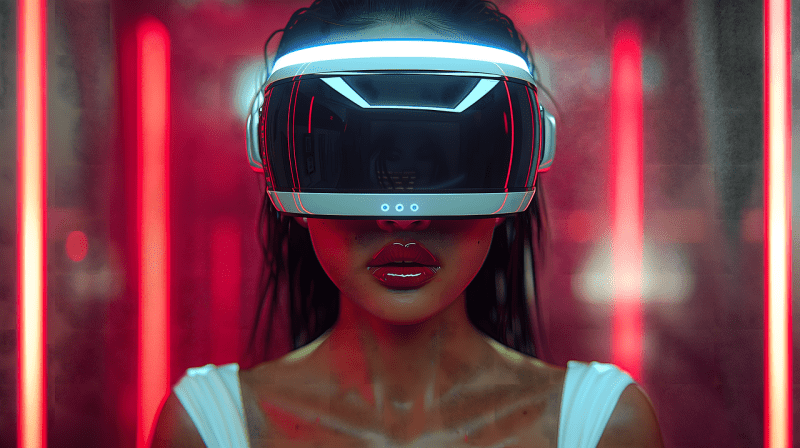Augmented Reality (AR) glasses are cutting-edge devices that blend digital content with the real world. Unlike traditional virtual reality, which immerses users in a completely digital environment, AR glasses allow users to see the physical world around them while also overlaying digital information. This unique combination opens up a plethora of exciting possibilities, from enhanced gaming experiences to innovative ways to access important information.
Typically, AR glasses are equipped with transparent displays, cameras, and sensors that detect the user’s surroundings. This technology enables the device to recognize objects and provide relevant data or interactive elements in real time. For example, a user could receive directions projected onto a sidewalk as they walk or view statistics for a player during a sports event simply by looking at them. The possibilities for integration with other technologies like smartphones and smart home devices make AR glasses an attractive option for many tech enthusiasts.
Many companies are developing AR glasses with a focus on different applications. Some are aimed at enhancing productivity in workplace settings, offering features like virtual monitors and collaborative tools. Others prioritize entertainment, allowing users to engage with games in new and exciting ways. As the technology continues to evolve, we may soon see even more diverse and practical uses for AR glasses in various industries, from healthcare to education.
With growing interest and investment in this area, AR glasses are poised to revolutionize how we interact with the world. They have the potential to change our daily routines, offering seamless access to information and enhancing our overall experiences. As more people become familiar with this innovative technology, it’s clear that augmented reality is not just a futuristic concept—it’s becoming a reality we can wear.
Benefits of Using AR Glasses
Another key advantage of AR glasses is their ability to improve productivity. For professionals in fields like engineering, healthcare, and education, AR glasses can provide instant access to vital information. For instance, a surgeon can view a patient's medical history and surgical plans while operating, allowing for a more efficient and safer procedure. This hands-free access to critical data boosts workflow and minimizes the chances of errors.
Moreover, AR glasses can create immersive training environments that significantly enhance learning experiences. For example, medical students can practice complex procedures in a simulated setting, while mechanics can study car repairs with step-by-step holographic instructions. This interactive approach not only makes learning more engaging but also helps in retaining knowledge more effectively.
Finally, AR glasses foster social interaction in innovative ways. With features like video calls overlaying the real world or sharing experiences with others in shared augmented spaces, they help bridge distances. Whether connecting with friends or collaborating with colleagues, AR glasses enhance communications and create a sense of presence that traditional devices simply cannot match.
Real World Applications
Augmented reality (AR) glasses are no longer just a futuristic concept; they are transforming various industries in remarkable ways. One of the most significant areas of impact is healthcare. Surgeons can use AR glasses during procedures to overlay vital information directly in their line of sight. This technology allows them to visualize critical data, such as patient anatomy or historical medical records, enhancing precision and improving outcomes. By making real-time data accessible, AR is changing the way medical professionals operate and collaborate.
In the field of education, AR glasses offer a new way for students to engage with learning materials. Imagine wearing glasses that display 3D models of the solar system or historical landmarks as you study them. This immersive experience can deepen understanding and retention of knowledge, making learning more interactive and enjoyable. Teachers can create lessons that captivate students, leading to a more fruitful educational journey.
Retail is another sector experiencing a revolution thanks to AR glasses. Shoppers can try on clothes virtually or see how furniture looks in their home before making a purchase. This ability to visualize products in a real environment can significantly enhance the shopping experience, reducing the likelihood of returns and increasing customer satisfaction. Retailers can use AR to provide personalized recommendations, making the shopping process more tailored and enjoyable.
Finally, AR glasses offer exciting opportunities in entertainment and gaming. Players can immerse themselves in their favorite games by seeing virtual elements overlaid on the real world around them. This fusion of reality and virtual gameplay creates a unique experience that traditional gaming simply cannot match. With AR, the lines between the digital and physical worlds blur, leading to new forms of storytelling and interactive entertainment.
Future of AR Technology
As we look ahead, the future of augmented reality (AR) technology appears bright and full of potential. With advancements in hardware and software, AR is set to become even more integrated into our daily lives. Imagine walking through a city and having real-time information about the places around you displayed right before your eyes. This kind of seamless interaction could transform the way we experience our environment, making everyday tasks more efficient and engaging.
One of the most exciting prospects for AR glasses is their application in various industries. From healthcare and education to retail and entertainment, AR technology can provide immersive training experiences, skill development, and enhanced customer interactions. For instance, medical professionals can visualize complex anatomical structures during surgeries, or students can explore historical sites and scientific concepts in a more engaging way. This means not only improved outcomes but also a richer learning experience.
Moreover, as AR technology becomes more accessible, we are likely to see an increase in social applications. Imagine attending a concert where you can see the lyrics of your favorite song floating in front of you, or communicating with friends through shared AR experiences, regardless of where they are in the world. These innovations could foster deeper connections and a shared sense of presence, even in a digital landscape.
However, alongside these advancements, there are challenges to overcome. Privacy concerns, content quality, and the need for user-friendly designs are paramount. As developers continue to innovate, addressing these issues will be crucial to ensure that AR technology is not only revolutionary but also responsible and enjoyable for everyone.



